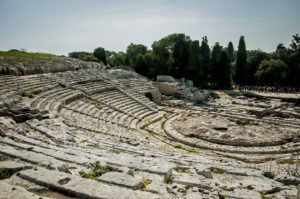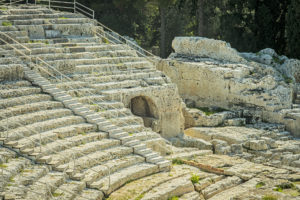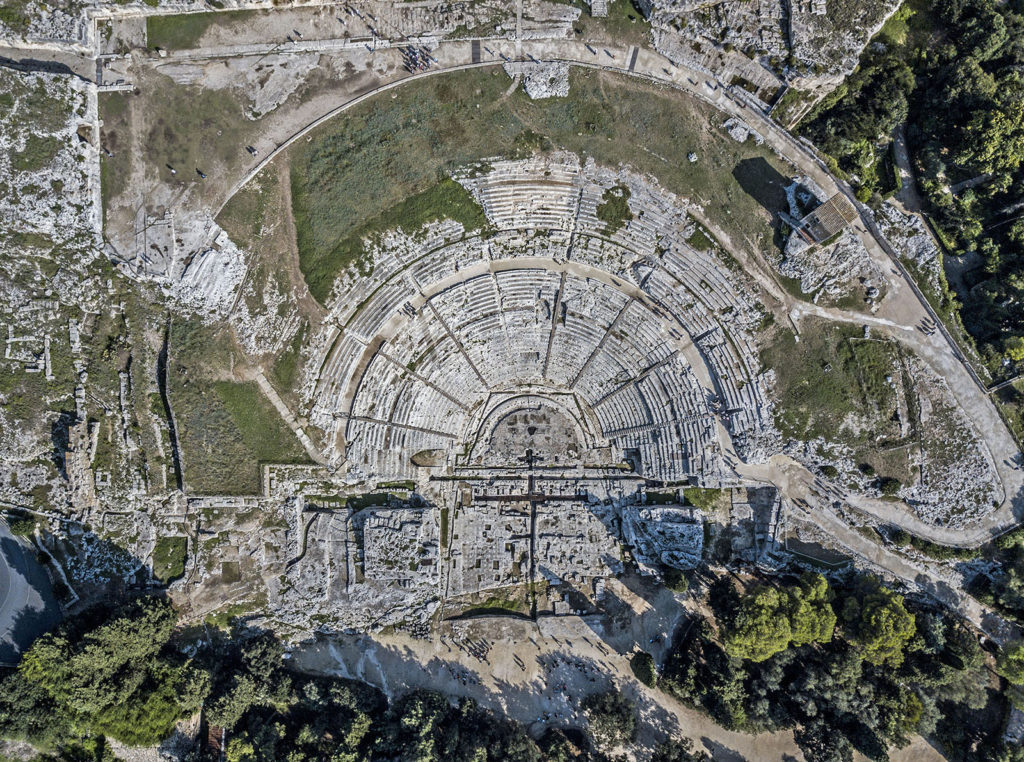The most impressive and fascinating historical memory of Syracuse resides in its Greek Theatre. Dug into the rock of the Temenite Hill, it has been a monument of exceptional formal beauty from antiquity to the present day. Its original layout, by the architect
Damokopos
, dates back to the 5th century BC. The structure underwent numerous renovations between the 4th and 3rd centuries BC, during the tyranny of Hiero II and afterwards in Roman times.
In this still deeply evocative place, the greatest artists of ancient Greece gave voice to their plays.
Among them was
Aeschylus
, the father of Greek dramaturgy, who performed two tragedies in the theatre of Syracuse: Women of Aetna and The Persians.
In its archaic form, the theatre did not have a semi-circular layout, which became customary during the 3rd century BC, but was formed of straight steps arranged in a trapezoid. It was the tyrant Hiero II who moulded the theatre into the morphology that can still be partly observed today.
The
cavea
had a diameter of 138 metres, one of the largest in the Greek world, and consisted of 67 flights of steps carved into the living rock and divided by the steps into 9 segments called cunei.
Halfway up ran the diazoma, a ring-shaped corridor that divided the cavea into several sectors. On the walls of the diazoma there were significant engraved dedications: the central cuneus was dedicated to Zeus, while the cunei on the left were dedicated to other deities; on the right were areas dedicated to members of the royal family.
The
orchestra
, where the choir performed, could be accessed from two side corridors (parodoi) in front of the
stage
. Below the orchestra there was a secret passage,
Charon's Staircase
, a flight of steps used for surprise appearances.


Even today the theatre maintains its identity: it is one of the greatest international stages in classical tragedy. The Greek Theatre of Syracuse is perceived as a buzzing element of life and not a tomb of lost values. Its structure is a timeless art form, as well as a fascinating ruin to be contemplated with the picturesque sentiment of travellers of the past.
